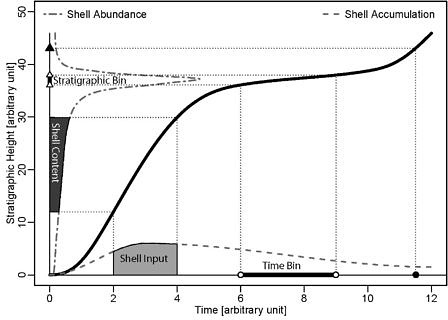Incorporating Information on Varying Sedimentation Rates Into Paleontological Analyses
Is clustering of extinctions really an increase in extinction rate or is it merely generated by reduced sedimentation rates that reduce the spacing between individual extinctions with long breaks between each other? Niklas Hohmann, Paleobiology Master student, has examined this question in his Bachelor thesis, which is now published in PALAIOS (Hohmann 2021). The methods he developed are implemented for the R software and were previously applied in peer-reviewed publications (Jarochowska et al. 2020).
The novelty of this approach is that it allows for a quantification of the effects of sedimentary processes on paleontological interpretation. Using this principle, Niklas showed that a peak in extinction rate on Seymour Island, Antarctica, approx. 250 thousand years before the Cretaceous/Paleogene impact can be equally attributed to an increased extinction rate or an extended time interval with low sedimentation rate.

